advertisement
advertisement
It is recommended to keep the puppy in a cage when it is first brought home to ensure that the puppy
has
sufficient rest and prevent it from biting furniture. When the owner is at home, the puppy can be
released from the cage for play, and when the owner goes out or sleeps, it should be kept in the
cage.No
matter what breed of puppy you raise, you should choose the size of the cage according to the adult
body
size of the same breed; The cage should be divided into a rest area and a toilet. The toilet area
should
be covered with diapers and sprayed with luring spray to cultivate the habit of dogs excreting
fixedly;
It is recommended to lay a blanket in the rest area to keep warm, but it is recommended to lay the
blanket after the dog has become accustomed to defecating at a designated location.
It is normal for a puppy to bark when it is locked in a cage at home. Don't worry, paying attention
to
the puppy's barking will give it positive feedback, leading to prolonged barking. When the puppy is
quiet, pay attention to it and give snacks and other rewards: the puppy will stop barking
unnecessarily
in about 5-7 days.
Due to the incomplete establishment of the puppy's immune system, do not let the puppy have too much
contact with the outside world before deworming and vaccination, and do not take the puppy out to
interact with other puppies; Prevent small dogs from being infected with various bacteria. In
addition,
due to the low immunity of puppies, they should be given a bath 7-10 days after vaccination.
When puppies are vaccinated for the first time, they generally need to receive 3 doses of immunity
vaccine and 1 dose of rabies vaccine; You can choose to receive the first dose of vaccine from the
45th
to the 60th day of your puppy's birth. After that, you can receive another dose every 21 days. After
completing the three doses of vaccine, you can ensure your health by receiving the immunity vaccine
and
rabies vaccine once a year.
Puppies can undergo internal deworming around 30 days after birth, and external deworming around 60
days
after birth; Depending on the feeding environment, the frequency of deworming is between 1-3 months.
It
should be noted that there should be at least a 7-day interval between deworming and vaccination.
Share a simple process of making homemade dog food, which can be matched according to the weight of
the dog, and fed 2-3 times a week as a complementary food to increase the dog's nutritional intake.
Raw material(Taking a total weight of 1000g as an example):
1.white meat 25%,You can choose chicken, duck, or rabbit meat.
2.Red meat 30%,Usually beef and lamb are chosen, and deer meat is also a good choice.
3.Muscle tissue 10%,Pig heart, pig stomach, pig lungs and other parts.
4.Fish 10%,salmon、cod or saury,remember to clean the fish bones thoroughly.
5.Animal viscera 15%,Mainly made of pig liver, can be paired with animal organs such as pig kidneys
and pig brains
6.Fruits and Vegetables 10%,Apples, broccoli, sweet potatoes, carrots, and corn, etc
Specific steps:
1.Cut the relatively hard vegetables into small pieces, steam them in the pot for 15 minutes, and
then put them into a blender to crush.
2.Crush the remaining ingredients except for vegetables in a blender.
3.Mix the mashed vegetables and meat together and stir evenly. Pinch to an appropriate size
according to the dog's appetite.
4.Steam in the pot for 25-30 minutes to ensure it is fully cooked.
5.Take it out and let it cool, then add a few drops of fish oil and feed it.
Tips:
1.Do not add any seasonings, even salt.
2.You can crush all the ingredients to make meatballs, making it easier for dogs to eat and
digest.
3.If done frequently, the raw materials can be replaced periodically to ensure the freshness of the
dog.
4.Due to different digestion times, it is not recommended to mix homemade dog food with finished dog
food for feeding.
How to calculate the feeding portion size
If your dog has sufficient exercise every day,We recommend feeding homemade dog food at a weight of
3.5% of the dog's body weight;If the amount of exercise is not high, it is recommended to feed at a
weight of 3% of body weight; But if dogs don't like to exercise, it is recommended to feed them at a
weight of 2% of their body weight.
If you insist on feeding your beloved dog homemade dog food, it is recommended to have a physical
examination every 3-5 months to ensure that your dog maintains a healthy physical condition and does
not become excessively obese or have insufficient intake.
Have you known about border collie? Border collie was originally a dog used for herding sheep in
Scotland, so they have a lot of energy. Later, they gradually evolved into a family mate dog breed.
border collie has a distinctive temperament. Their IQ is the highest among dogs. Next, I will
introduce
the advantages and disadvantages of border collie.
Border Collies have almost no aggression, they are very enthusiastic about people, can get along
well
with children and the elderly, and will not show an aggressive attitude even towards strangers. Even
during lactation, Border Collies can be very friendly to people who come to see their cubs.
Border collie's IQ can rank in the top three among dogs. They are truly smart dogs. They can reach
the
IQ of human children aged seven or eight years. Moreover, border collie already has a certain
ability of
logical thinking. They have the ability to think independently about things and understand the
situation. When you have a a Border Collie in your home, you will understand how smart this kind of
dog
is after a long time. Because many people who feed border collie will have the illusion of who is
feeding whom.
Border collie has bright and smooth hair and slender body shape. Among many outstanding dogs, border
collie's appearance is also excellent.

After introducing the advantages of border collie, what are its disadvantages?
First of all, the high IQ of border collie is its advantage. It takes less time to train border
collie
to complete some simple interactions than other dogs, which is also its disadvantage. Sometimes
border
collie will think that the IQ of the owner is not necessarily like it. Raising border collie needs
to
fight with it frequently. border collie, like a child of seven or eight years old, already knows a
lot
of things. So in some cases, the border collie will oppose the master's instructions.
Secondly, the hair of border collie needs regular care and grooming; Border collie has long dog
hair, so
like other long haired dogs, border collie will shed hair, so it is necessary to clean up the hair
in a
timely manner during the period of dog hair loss. For some owners who are addicted to cleanliness or
have respiratory diseases or allergic diseases, it is not appropriate to feed border collie or other
dogs.
Finally, since border collie is responsible for herding, its energy can be described as very strong,
and
its demand for sports is also very large. So whenever the owner takes it out for exercise, the owner
may
be tired and it won't feel tired. Therefore, it is better for the owner to have plenty of time to
exercise outdoors with border collie for a long time.
Many people cannot distinguish the difference between Akita Inu and Shiba Inu, but in fact, the main
difference between Akita Inu and Shiba Inu lies in their personalities and body types. Akita Inu has
a larger body size and a calm personality, while Shiba Inu has a smaller body size and a lively and
proactive personality. This article will give you a general introduction to the characteristics of
Shiba Inu, allowing you to have a certain understanding of them before choosing to raise them.
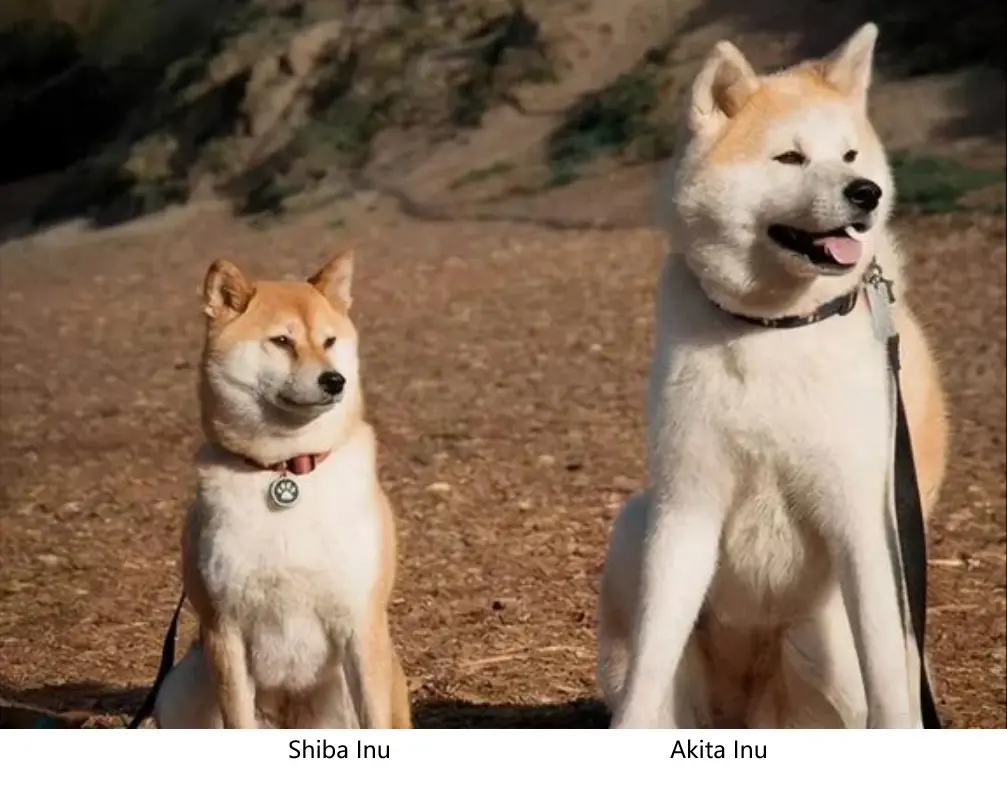
I believe many people became aware of the Shiba Inu breed through Kabosu's emojis and chose to raise
Shiba Inu. So, what are the advantages and disadvantages of raising Shiba Inu?

If you live in an apartment in the city and the sound insulation is not perfect, then Shiba Inu is a
great choice as it won't disturb the residents at all! Many people haven't heard a Shiba Inu bark
for a
year, and they say Shiba Inu is probably a mute dog. In fact, they don't know how to bark, they just
don't like to bark.
It's hard to find a dog with a more cleanliness obsession than Shiba Inu. They usually have high
hygiene
requirements for their sleeping areas and don't like to defecate or pee in dog beds or cages. When
walking the dog outside and encountering a rainy pond, they will automatically jump and bounce away,
afraid of getting wet, so behaviors like Labrador that make them want to jump down when they see a
small
river are unlikely to happen to them. Therefore, Shiba Inu is almost the dog with the smallest body
odor, even if it doesn't bathe for a month, there is hardly any obvious body odor.
Most Shiba Inu have an independent personality and are not clingy to people. They do not need their
owners to constantly hold them in their arms and comfort them, so when you are at home, you can
focus on
doing your own things and they will quietly be at your feet and by your side. But this does not mean
that Shiba Inu is not close to people, it will show a close side towards the people it likes.
Finally, Shiba Inu is a medium-sized dog with a relatively small body size, weighing around 10kg.
Whether it is an elderly person or a child, there will be no pressure on body size or weight when
interacting closely with it.
After discussing the advantages, the following are the disadvantages of Shiba Inu.
Firstly,Shiba Inu is a small dog with a large dog like personality. It is more stubborn than
ordinary
pet dogs and requires longer training and education during its puppy stage. It has its own thoughts
and
temperament, and will constantly tug at its master servant relationship with its owner. This
requires
strict education and stability as the dog ages. There are also significant differences in the
personalities of males and females.
Secondly, Shiba Inu belongs to the cold zone dog breed and has two layers of fur on its body, one
layer
of fluff on the inside and one layer of bristles on the outside. After reaching the age of one, it
will
change its fur twice a year. The shedding of fur is done by first shedding light on the long side,
unlike other pet dogs that shed edge length. The shedding cycle lasts about 4 to 8 weeks, and the
shedding period is usually during the seasons of spring and autumn. The amount of fur shed during
shedding is really large.
Finally, when taking the Shiba Inu out for fun, be sure to hold onto the Shiba Inu's rope. Once the
Shiba Inu discovers that it can move freely without restraint, it is highly likely that you will not
be
able to catch up with the Shiba Inu in action, resulting in the Shiba Inu being lost.
Based on the above advantages and disadvantages, I personally think that Shiba Inu is very suitable
for
urban environment breeding. Even if living in high-rise buildings, raising Shiba Inu is very
convenient
and not easy to disturb the public. Of course, the disadvantages need to be solved through training
and
education, as well as diligent cleaning. I believe that vacuum cleaners, drum hair sticking tools,
etc.
are all necessary household items for pet owners.

Many people cannot distinguish the difference between Akita Inu and Shiba Inu, but in fact, the main
difference between Akita Inu and Shiba Inu lies in their personalities and body types. Akita Inu has
a larger body size and a calm personality, while Shiba Inu has a smaller body size and a lively and
proactive personality. This article will give you a general introduction to the characteristics of
Akita Inu, allowing you to have a certain understanding of them before choosing to raise them.
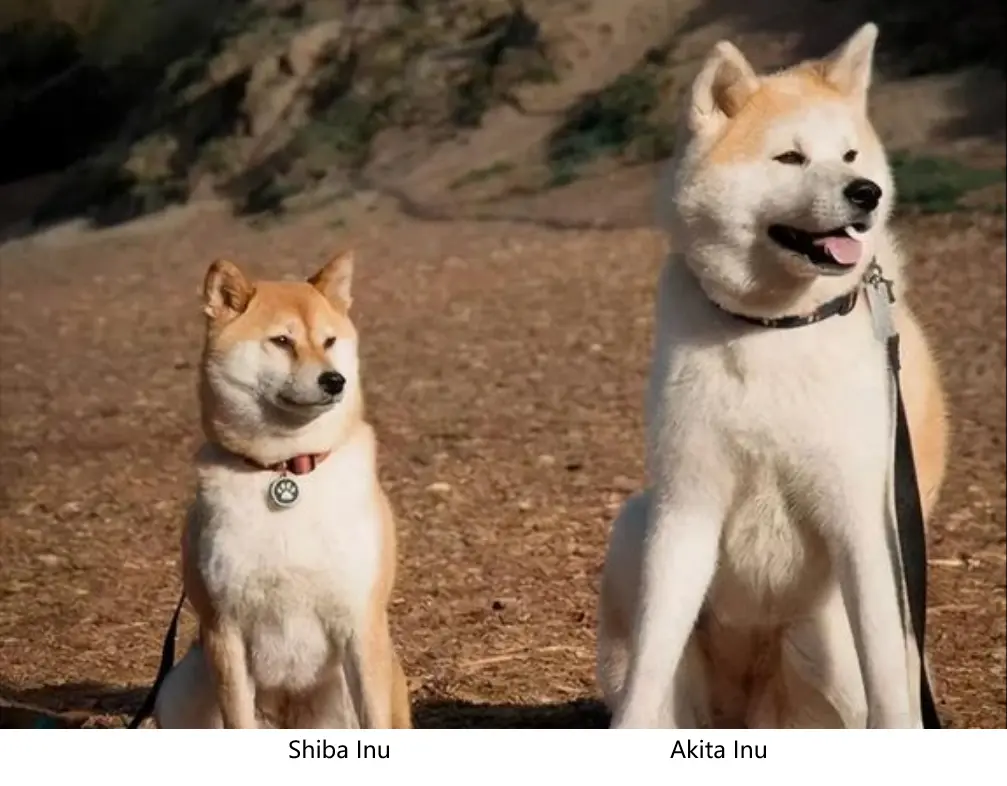
The difference between Akita Inu and Shiba Inu mainly lies in their personality and body size. Akita
Inu has a larger body size and a calm and composed personality, while Shiba Inu has a smaller body
size and a more lively and active personality.Akita Inu is an excellent companion dog known for its
loyalty to its owner, being very gentle towards family members and familiar people, and having a
high level of vigilance towards strangers; The story prototype of "Hachi: A Dog's Tale" is an Akita
dog; They are intelligent, able to quickly understand their master's instructions, and have strong
learning abilities. However, due to their relatively independent personalities and strong
self-awareness, they require a certain amount of patience from their master during training.

Akita Inu has strong adaptability and independence, with enough time for outdoor activities, and can
even adapt to smaller living spaces without requiring too much companionship. It is suitable for
busy work owners, which is why many other large dogs are not as good as Akita Inu; It should be
noted that Akita Inu prefers a clean environment and is sensitive to both herself and her living
environment, requiring her owner to regularly clean and organize their living space. Meanwhile,
Akita Inu has excellent cold resistance, and people living in cold regions can consider keeping
Akita Inu when choosing a dog.
Before choosing to raise an Akita Inu, you also need to know some of its shortcomings.
Akita Inu have a stubborn personality, are independent and independent, and may be difficult to
control during training. It is necessary to develop good habits at a young age. Although Akita dogs
are loyal to their owners, they are indifferent and even wary of strangers. Therefore, it is
important to cultivate Akita dogs to develop social habits, so as not to cause harm to others when
raising them in areas with high population mobility. They also have a strong possessiveness and
territorial awareness, which can lead to strong aggression towards other dogs.
As a large dog, Akita Inu needs sufficient exercise to release energy; If there is a lack of
exercise, it may lead to psychological problems and destructive behavior in Akita dogs. At the same
time, Akita dogs have a certain risk of disease, such as hip dysplasia and thyroid diseases. When
raising them, it is important to pay attention to their physical condition and seek medical
attention promptly if any problems arise.
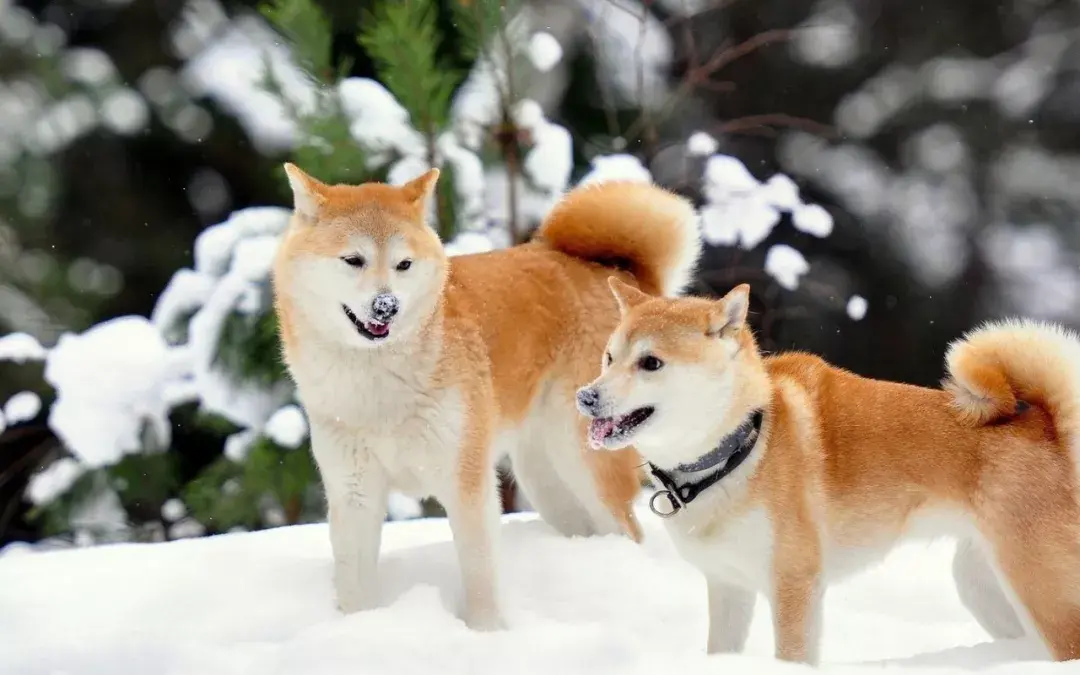
Nowadays, many people choose to raise Labrador Retrievers and complain because they did not fully
understand their characteristics before raising them. Now let me take you to understand the
advantages and disadvantages of Labrador Retrievers and help you get along better with them.
Let's first talk about the advantages of Labrador Retrievers and see what other advantages they have
that you may not know.
Labrador Retrievers are mobile hunting dogs that prefer to exercise and have a higher daily physical
activity. Therefore, their owners do not need to worry too much about their health and physical
fitness. Growing up, Labrador Retrievers are still relatively reassuring, with a good frequency of
illness and good health.
Labrador Retriever ranks 7th in intelligence among dogs and is considered the smartest breed of dog.
Although there is a gap with dogs such as Border Collies, the difference is not significant when
only learning basic skills. Most Labrador Retrievers will understand their owner's meaning and
remember when they hear a new command 5-10 times, with a probability of following the command being
over 95%. Keeping a Labrador Retriever is not a big problem for both the Labrador Retriever and its
owner, whether it is through regular urination and defecation training or basic obedience skills
such as sitting and lying down.
Labrador is a dog breed that is very close to humans. It is non aggressive and has a very gentle
personality. Even when encountering strangers on the road, it will wag its tail to greet them. It is
also very friendly to children and the elderly, and is very adept at playing with children in daily
life. It is a very gentle dog.
In addition, Labrador Retrievers like to please their owners, and their owners' touches, words,
laughter, and hugs are all rewards for them. In daily interactions, it is important to avoid
mistakes and encourage dogs. For example, don't touch it when it pounces, so as not to develop a bad
habit of pouncing on people.
After introducing the advantages, what are the disadvantages of Labrador Retrievers?
Although it is a short haired dog, it does not affect its shedding of fur at all. Once it is the
season for changing fur, it sheds fur everywhere in the house. Keeping a Labrador Retriever requires
regular grooming of its fur. Otherwise, everything from your living room to your clothes will suffer
According to statistics from professional dog training associations, Labrador Retrievers have a high
level of physical activity. If their exercise needs are not met, it may lead to bad habits such as
damaging furniture, playing and biting excitedly, and rushing out when going out. Therefore, it is
recommended to give Labrador Retrievers more than 2 hours of outdoor exercise time every day. If you
do not have sufficient free time, it is still not advisable to choose to keep Labrador Retrievers.
Greedy eating is the biggest weakness of Labrador Retrievers. In addition to being greedy, Labrador
Retrievers also have a huge appetite and have no concept of being full. Therefore, if not careful,
it is easy to raise Labrador Retrievers in a state of severe overweight, which can harm their own
health.

Although Golden Retriever is one of the most commonly raised dog breeds, it not only has a likable
personality but is also easy to raise. Let's take a look at the characteristics of Golden Retriever
together.
Golden Retrievers are known for their friendliness and loyalty, establishing deep emotional
connections with humans. Whether with family members or strangers, Golden Retrievers always show
great friendliness, making them one of the most popular family pets
One of the important reasons why the Golden Retriever has become an ideal choice for many families to
keep pets is its strong adaptability. Whether living in urban apartments or rural areas, it can
quickly integrate into the local environment.
As an ideal training target for special dogs such as guide dogs and search and rescue dogs, Golden
Retrievers are very intelligent, adept at quickly understanding human commands, and able to quickly
learn various skills.
Tip: For outdoor enthusiasts, the Golden Retriever is also a great companion; They are full of
vitality and can participate in activities such as swimming, jungle exploration, hiking and
mountaineering with you. For some people who want to participate in outdoor activities with their
dogs, the Golden Retriever is a breed worth choosing.
Next, let's take a look at the drawbacks of the Golden Retriever.
The shedding phenomenon of Golden Retrievers is very serious. Due to their double coat and two
large-scale hair replacement periods every year, their owners need to regularly clean and maintain
their hair. For people with cleanliness or respiratory diseases, Golden Retrievers are not a
suitable breed for breeding.
As a hunting breed, the Golden Retriever requires a lot of exercise to maintain its physical and
mental health. If its exercise needs cannot be met, the Golden Retriever may become restless and
exhibit destructive behavior.
As a hunting breed, the Golden Retriever requires a lot of exercise to maintain its physical and
mental health. If its exercise needs cannot be met, the Golden Retriever may become restless and
exhibit destructive behavior. At the same time, the huge demand for exercise brings about a huge
appetite, and Golden Retrievers usually have a relatively large appetite, which also means they need
more food to meet their energy needs. If you are a person who has just started working and is not
financially well-off, the appetite of Golden Retrievers will bring you a certain burden. Please
consider carefully before feeding them.
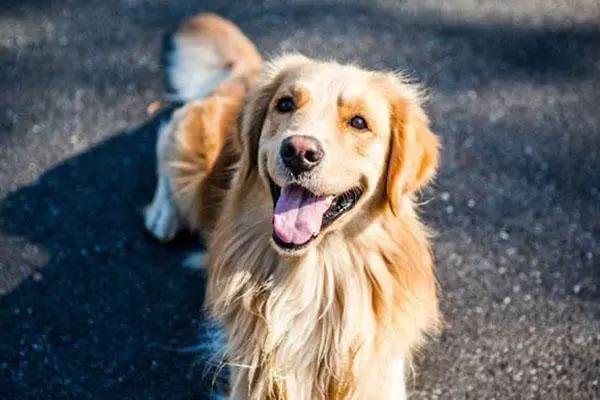
Is the corgi easy to keep? What should we pay attention to when raising corgi? This article will
take you to deeply understand the characteristics of corgi dog, so that you can have a preliminary
understanding of it before breeding corgi.
The height of an adult corgi dog is about 25-30cm, and the weight is about 10-15kg. Most corgi dogs
mature at one year old, while a few will delay their development to two or three years old.Corgi is
a kind of gentle and friendly dog, always willing to be close to people, and can quickly establish
trust and feelings with the owner. As a type of sheepdog, they are lively, energetic, and energetic;
The reaction speed is amazing, and it can quickly capture changes around it, making it a highly
alert dog. Corgi dogs are very smart, quick witted and easy to train. As long as they are well
taught, they can quickly understand their master's instructions.
So what are the characteristics of corgi dogs and whether they are suitable for breeding?
1.Because of corgi's body shape, they will suffer from spinal diseases; Due to corgi's congenital
long body and short limbs, his cartilage is not fully developed. If he often climbs stairs, fights
for a long time or runs and jumps violently, his spine will be compressed for a long time, causing
spinal lesions. If you want to avoid this kind of disease for your corgi dog, you should try to
avoid corgi standing for a long time, climbing stairs and reducing corgi dog's strenuous exercise to
reduce the pressure on the spine.
2.Corgi dogs are gluttonous. A little more food will easily make them fat. If they are too fat, they
will easily cause extra burden on corgi's joints and spine. Therefore, remember to control the
amount of food each time, and let corgi dogs develop the habit of regular exercise.
3.As a kind of sheepdog, corgi dogs are very sensitive to sounds, which is the nature of corgi dogs
for
a long time. Therefore, the sound of car horns, the sound of trains moving, the sound of fireworks
and
firecrackers during the Spring Festival, and other huge environmental sounds may make corgi dogs
nervous
and afraid, and then produce stress reactions; The owner can first let the corgi dog get used to the
environmental sounds generated in daily life when he is young, so as to reduce the psychological
problems caused by the corgi dog's over sensitivity to sounds.
4.As a kind of shepherd dog, the corgi dog is lively and energetic and has abundant physical
strength.
Therefore, the owner should have enough time to take the corgi dog outdoors every day. If the corgi
dog
is not fully exercised to vent his energy, the corgi dog will destroy the goods at home and produce
depression in the long run.
5.Although corgi's hair is not long, it is very thick. When corgi is about four months old, he will
experience the first hair changing period. The breeder is mainly prepared for the degree of hair
loss of
corgi dogs. Owners not only pay attention to their dogs' balanced diet and eat less high-fat foods,
but
also recommend helping their dogs comb their hair every day to help new hair grow smoothly. A
balanced
diet also helps prevent hair loss in corgi dogs.
These are the main characteristics of corgi dogs. I hope they can help you in the process of raising
corgi dogs.
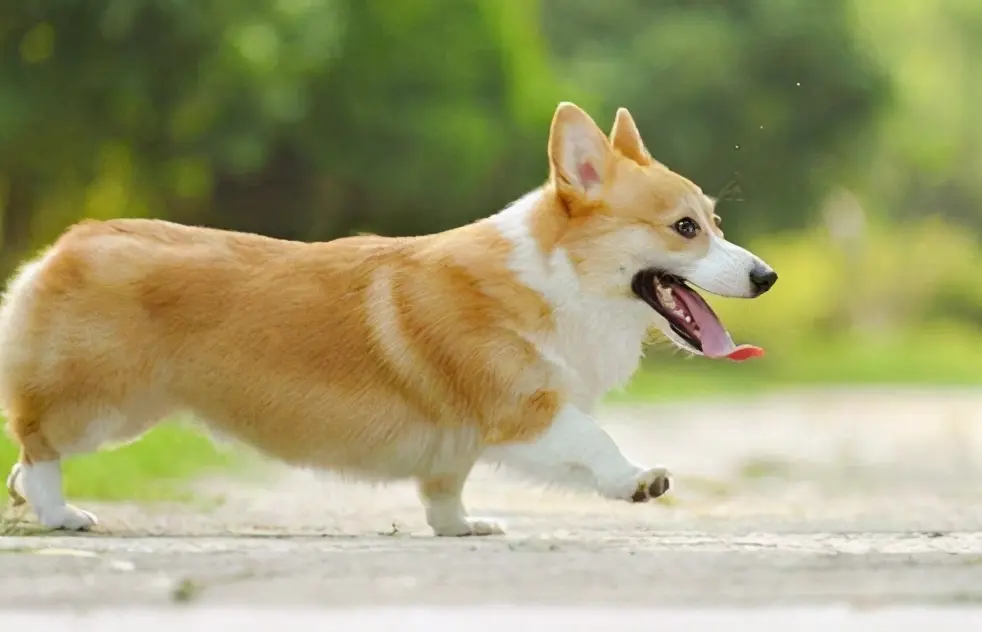
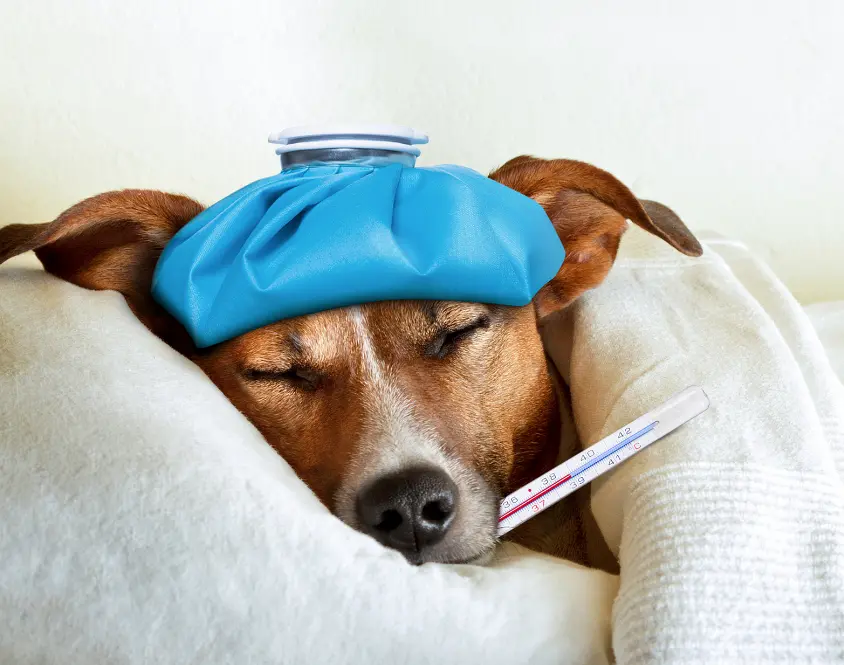
Under normal circumstances, dogs almost never cough; If you find your dog coughing all the time,
please pay attention. In addition to respiratory diseases, heart disease is also one of the
important causes of dog coughing.
If older dogs show symptoms of coughing, owners should pay attention. Dogs with heart disease may
experience persistent coughing after exercise or lying down, accompanied by a lethargic state. In
severe cases, they may even experience difficulty breathing. It is recommended to seek medical
attention as soon as possible to confirm whether they really have heart disease and receive timely
treatment. In addition to older dogs, Chihuahua, corgi and other breeds are also high-risk breeds of
heart disease, so the owner should pay more attention.
Tracheal collapse is a common disease in small dogs such as Shih Tzu and Pomeranian. Tracheal
collapse caused by the wear and degradation of cartilage in the dog's trachea can lead to symptoms
such as coughing and difficulty breathing; Dogs suffering from tracheal collapse should seek medical
attention immediately and use medication under the guidance of a doctor for treatment; If the owner
fails to detect it in a timely manner and the condition worsens, stent placement surgery may be
necessary for treatment; This is a significant challenge for both dogs and their owners, so it is
important to pay more attention to the condition of dogs in daily life.
In addition to pathological coughing, some environmental changes can also cause coughing symptoms in
dogs. For example, the loud environmental sounds such as firecrackers during festivals and holidays
can startle dogs and cause them to cough briefly; Irritating gases such as excessively irritating
perfume, cleaning spray or cigarettes can also make dogs cough. It is recommended that dogs live in
fresh air as far as possible. If the above cough symptoms do not improve in a short period of time,
it is recommended to undergo further examination.
In addition, significant changes in temperature can also stimulate the respiratory system of dogs,
causing coughing symptoms. This phenomenon is more pronounced in older dogs, and owners should try
to
avoid their dogs frequently experiencing significant changes in temperature.
If your dog is a newborn puppy and the symptoms of sudden coughing have not improved, please pay
special
attention because the puppy's immune system is not fully established and the respiratory system is
not
fully developed, making it more susceptible to various bacterial and viral infections, and the
respiratory tract is also prone to symptoms such as blockage and inflammation; In addition, there is
also a risk of developing heart disease, so if the cough symptoms of puppies do not improve, please
seek
medical attention immediately to confirm the cause.
Regularly cleaning your dog's mouth can help prevent problems such as bad breath, tartar, gum
inflammation, etc., and maintain a healthy mouth. Below are several methods for cleaning your dog's
mouth.
The simplest way is to purchase relevant food and toys. There are specially designed chewing toys
and oral cleaning foods on the market, which can help dogs remove food residue and plaque from the
gaps between their teeth through friction when biting, making their teeth clean.You can also choose
to use natural ingredients instead of the chewing toys or food mentioned above, such as apples,
radishes, or large bones, which can have a certain effect on grinding teeth and cleaning teeth.
However, be careful to choose bones that are not easily bitten by dogs (such as cow leg bones), as
broken bones may scratch the dog's esophagus and intestines.
A more tedious cleaning method is to brush the dog's teeth; Firstly, choose a toothbrush that is
suitable for your dog according to its size. Nowadays, glove type toothbrushes are also available
for purchase. Secondly, it is necessary to purchase dog specific toothpaste. Toothpaste used by
humans may contain fluoride or other harmful substances to the dog's body, so it is not recommended
to use it.
After preparation, let the dog lick the toothbrush and toothpaste to get familiar with their scent.
Then gently open the dog's mouth and start brushing from the outside of the teeth near the gums; If
the dog shows resistance, stop brushing immediately. Do not force the dog, but gradually adapt to
brushing; Brushing teeth for 75-120 seconds each time is sufficient.You can also purchase dog
specific mouthwash and mix it with the dog's daily drinking water in proportion for the dog to
drink; Or purchase a special cleaning spray. Under the condition of ensuring that the dog is
familiar with the smell of spray and will not have stress reaction to the use of spray, directly
spray spray on the dog's mouth to help the dog inhibit the growth of oral bacteria and reduce
halitosis and dental plaque.
Please regularly clean your dog's mouth during its early childhood to make it accustomed to this
behavior and reduce resistance to oral hygiene. Regularly check your dog's teeth and gums for any
odor, swelling, or looseness, and seek medical attention promptly if any issues arise.












